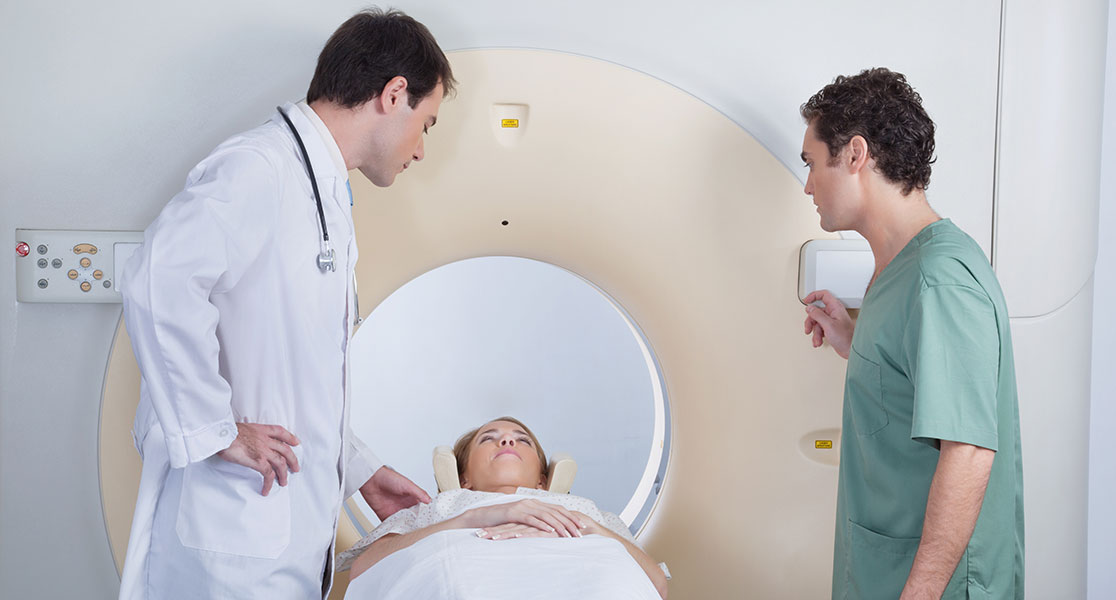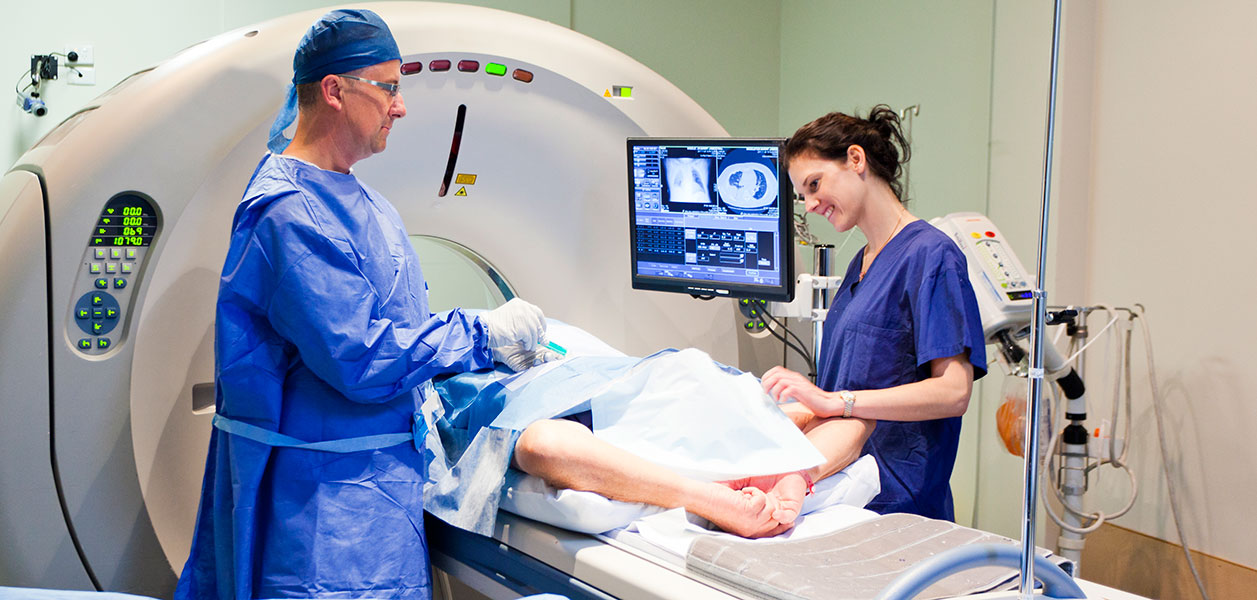MRI, magnetic resonance imaging, uses powerful magnets, radio waves and computer processing to produce detailed images of internal anatomy. Unlike CT or other types of radiology procedures, MRI does not use radiation.
The MRI scanner itself is a large tube surrounded by a very large circular magnet that surrounds the patient. Patients lay on a moving bed that advances inside the large circular magnet. The magnetic field created by the giant magnet aligns hydrogen protons. These aligned protons are then exposed to radio waves, causing the protons of the body to produce a faint signal, detected by the scanner’s receiver, which then transmits and processes this information via computer in order to produce a highly detailed image.
MRI images are interpreted by a radiologist who specializes in the specific area being studied. There are some MRI technologies available which are more open while still producing the necessary magnetic strength to produce the image clarity needed in MRI. We will work with you to use the technology that works for you.
FAQ: MRI
Why is the scanner so loud?
The MRI machine creates images by running power through an electromagnet to produce a strong magnetic field. The energy required to generate the magnetic field means that the process is noisy. When you hear loud noises during your MRI, nothing is wrong! This is the sound of the scanner working properly.
How long does an MRI take?
Most MRIs take approximately one-half hour; however, some scans of the legs last for about an hour. We’ll be happy to provide details about your particular procedure.
What is an Open MRI?
A traditional MRI can be difficult for some patients and an Open MRI is an alternative. An Open MRI looks like a larger CT scanner, but with a shorter table and open on both ends.
Do I need to remain still during the exam?
Yes, because this is what enables the machine to produce the detailed images required for a radiologist to evaluate your scan. Excess movement can degrade the quality of the image.
Does MRI involve radiation?
No, an MRI uses radio waves and a magnetic field; there is no ionizing radiation produced in an MRI.
Why do I have to undress for an MRI?
Because an MRI uses an extremely powerful magnetic field, no metal whatsoever can come in contact with the MRI or with a patient receiving an MRI. In case there is any unknown metal, including metal threads, it is important to ensure you are completely clear of any unknown materials. It is also very important that you check with your doctor and your technologist if you have any brain, ear or eye implants or any metal whatsoever inside your body.
Will I be inside a tunnel?
Yes, a traditional MRI involves going inside a tunnel with openings at the front and back. If you are claustrophobic or otherwise unable to use a traditional MRI, Open MRI and related technologies are available. You can be sedated for an MRI if necessary.



